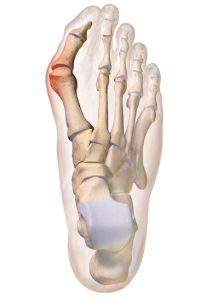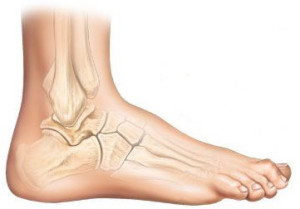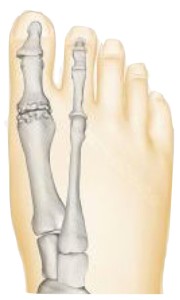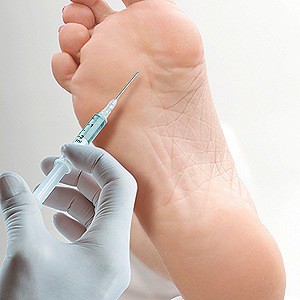Dr Lévy corrects hallux valgus, also known as bunions, using a percutaneous minimally-invasive technique. This method means less pain after the surgery and a faster recovery than with the standard technique. The scars are practically invisible. It does not involve screws, pins or staples.
Find out more
Find out more
Morton’s Neuroma is a painful foot condition caused by compression of a nerve between two metatarsal bones. This compression causes inflammation of the common digital plantar nerve, a condition known as Morton’s Neuroma. Sufferers experience searing pain that feels like an electric shock radiating into the toes. Surgery can treat the condition but is a last resort after other non-surgical treatments.
Dr Lévy treats Morton’s Neuroma using a percutaneous minimally-invasive technique.
Find out more
Dr Lévy treats Morton’s Neuroma using a percutaneous minimally-invasive technique.
Find out more
Hammer toe is a deformity where the toe is bent and cannot be straightened. Often caused by hallux valgus (a bunion on the big toe), the deformity causes the toe to rub constantly against the inside of shoes. This rubbing leads to severe pain and corns that keep coming back, despite pedicure treatments. Treatment is surgery and involves simultaneous correction of the bunion. Dr Lévy treats Hammer Toe using a percutaneous minimally-invasive technique.
Find out more
Find out more
Hallux rigidus is the name given to primary osteoarthritis of the first metatarsophalangeal joint of the hallux (the joint at the base of the big toe). It's a painful deformation caused by exostosis (bone growth) on the top of the foot, visible as a bump under the skin that rubs against shoes. The other clinical sign is stiffness. If medical treatment (injections) is unsuccessful, it can be treated with surgery.
Dr Lévy treats Hallux Rigidus using a percutaneous minimally-invasive technique.
Le Docteur Lévy opère l'Hallux Rigidus par technique percutanée mini-invasive.
Find out more
Dr Lévy treats Hallux Rigidus using a percutaneous minimally-invasive technique.
Le Docteur Lévy opère l'Hallux Rigidus par technique percutanée mini-invasive.
Find out more
A foot lift is used to reduce pain in the forefoot by injecting hyaluronic acid filler into the ball of the foot beneath the metatarsal heads. This sort of pain is caused by the prolonged wearing of high heels. The injections can be given at the clinic under local anaesthetic.
Find out more
Find out more






